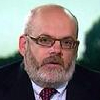The numbers: Consumer borrowing is not showing any warning signs about the health of the economy. Total consumer credit increased $17 billion in January to a seasonally adjusted $4.03 trillion, according to the Federal Reserve. That’s an annual growth rate of 5.1%. Economists had been expecting a $16.6 billion gain, according to Econoday. Credit rose a revised $15.4 billion in December, the Fed reported Thursday, down from the prior estimate of $17 billion.
What happened: Revolving credit, like credit cards, rebounded in January, rising by 2.9% after a 1.1% gain in December. Nonrevolving credit, typically auto and student loans, rose 5.9% in January, for the second straight month.
Big picture: Credit growth has been steady, reflecting income growth and consumer optimism.
But there have been recent reports calling into question this tranquil picture. The Fed’s latest Beige Book report found that consumer spending was “mixed” in late January and February, in part due to higher credit costs. And the Fed’s latest survey of senior loan officers concluded that demand for consumer loans was falling while banks were tightening standards on loans. There was also a lot of attention paid to a report that a record 7 million Americans are 90 days or more behind on their auto-loan payments.
John Silvia, former chief economist at Wells Fargo, and now head of his own firm, Dynamic Economic Strategy, dismissed the doom and gloom. Consumer credit remains “OK for now,” he said in an interview. Silvia pointed to two statistics. The senior-loan-officers survey found banks’ willingness to make consumer loans stands at 14% in the fourth quarter, compared with 7.8% in the second quarter of 2007. Another Fed report, the current debt service ratio, also published by the Fed, is 1.53 compared with 18 at the start of the last recession.
A turning in the credit cycle won’t come until jobless claims start to rise, he added.
“When the economy slows down and jobs start drying up, that’s when you’ll see who is over their skis,” he said.
What are they saying? Ian Shepherdson, chief economist at Pantheon Macroeconomics, said some of the increase in borrowing in January was likely initiated by government workers furloughed during the partial government shutdown.
Market reaction: Stock benchmarks DJIA, -0.78% SPX, -0.81% closed lower Thursday.



